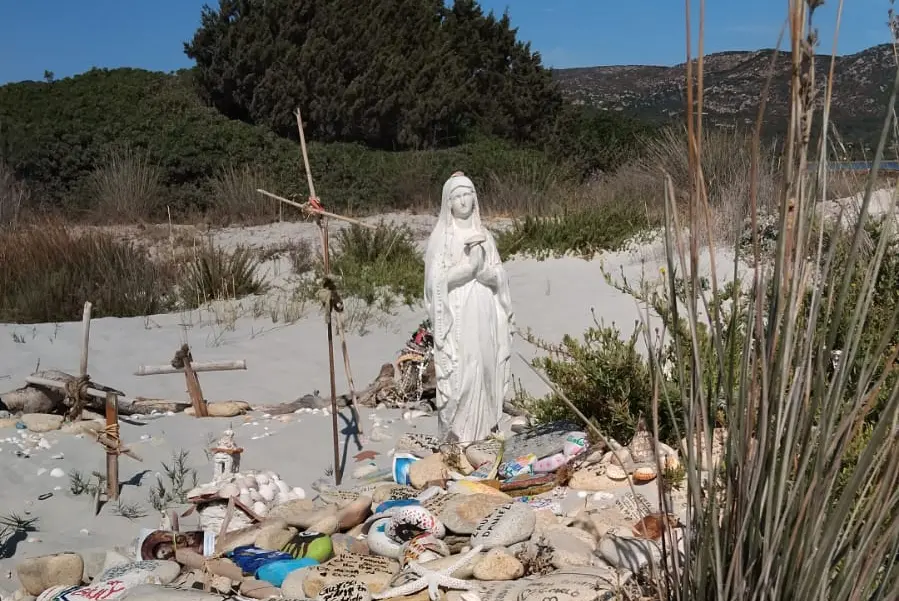The Cinta, the Madonna on the beach and the stones of love
Around the statue, shells and stones act as a frame: on them visitors write names, dates, thoughts, prayersPer restare aggiornato entra nel nostro canale Whatsapp
It doesn't appear in official guides, yet it has become a small landmark for those walking the long Cinta beach. Right at the entrance to the pond, protected by dunes and Mediterranean scrub, stands the Madonnina della Cinta, a simple statue of the Virgin Mary, in perfect harmony with the surrounding landscape.
There, amid the scent of the sea and the rustling of the wind through the reeds, a silent ritual unfolds. Around the statue, shells and stones frame it: on them, visitors write names, dates, thoughts, and prayers.
Some leave their own, their partner's, a son's, a daughter's, or a friend's. An intimate gesture, combining religious devotion with the desire to preserve a memory and seal a bond.
A custom reminiscent of other symbolic places of love: from the Milvian Bridge in Rome, where the padlocks inspired by Federico Moccia's novel have become a romantic icon, to Juliet's house in Verona, where notes and dedications continue to fill the wall in front of the Shakespearean statue.
But here, on the seashore of San Teodoro, the language is the simple and immediate one of nature: shells, sand and stones become witnesses of feelings and promises .
The Madonnina has been there for about five years, discreet yet central: a small open-air altar, which over time has transformed into a collective diary, where the stories of those who stroll on the beach intertwine by the sea.
